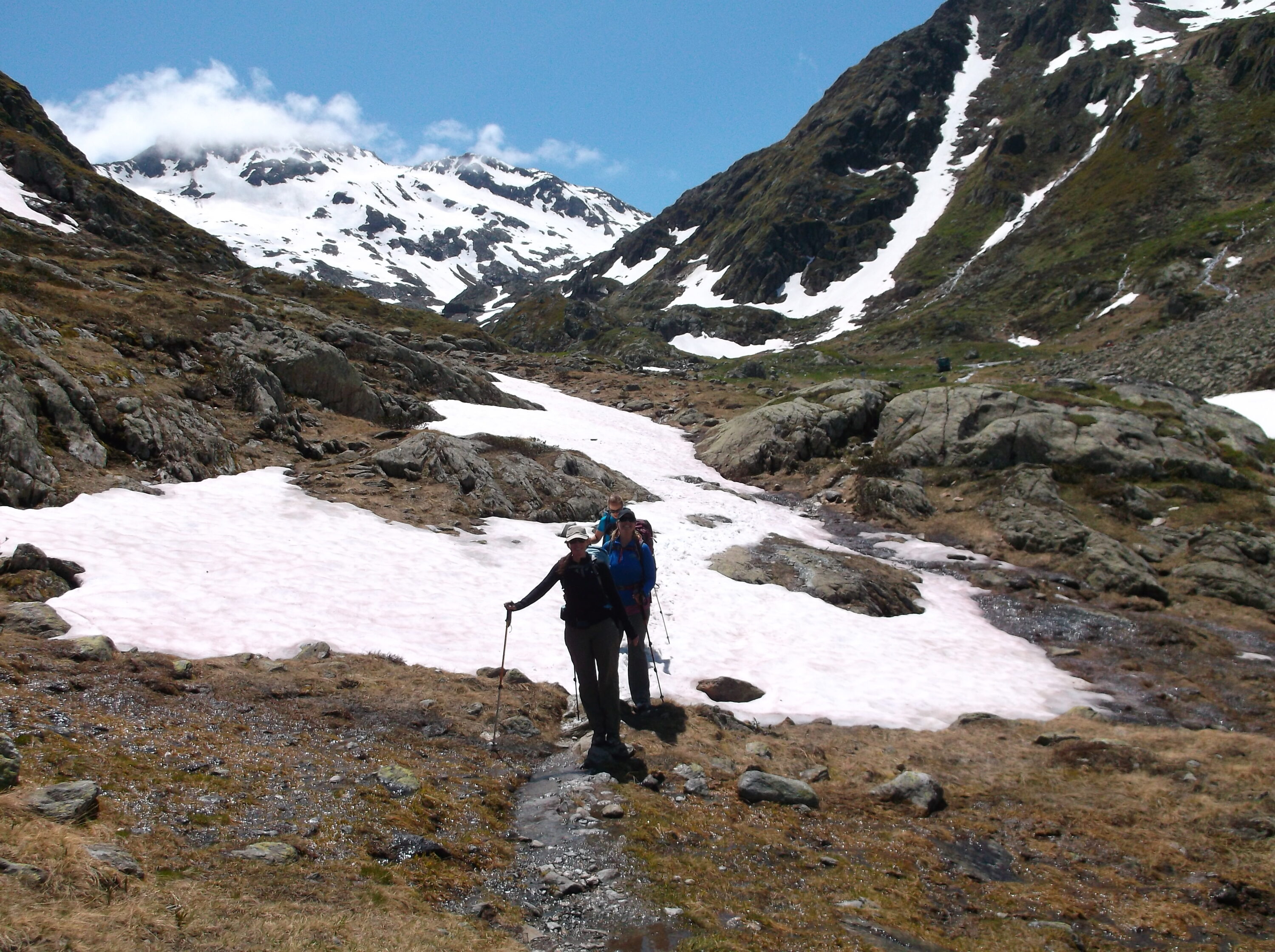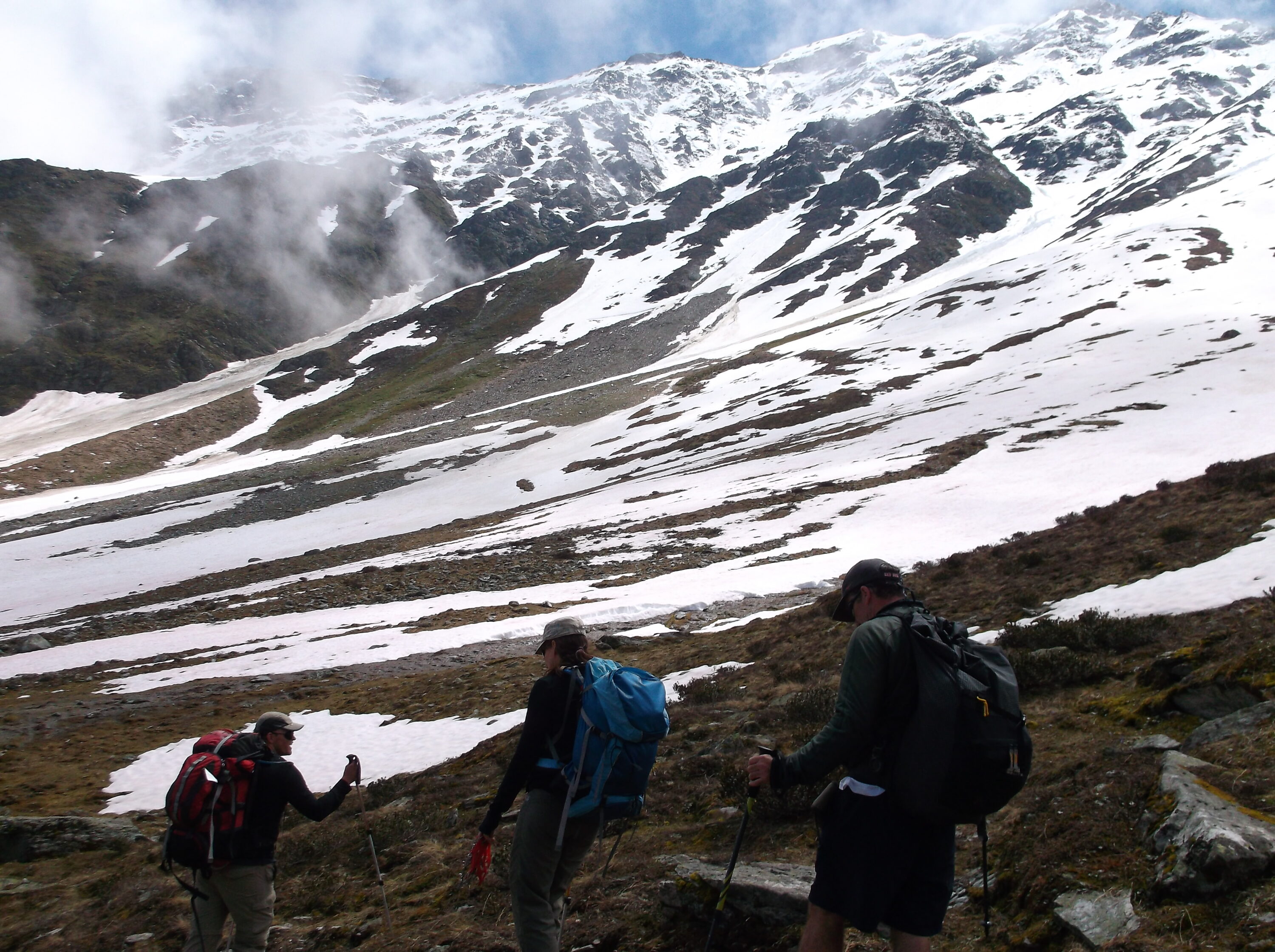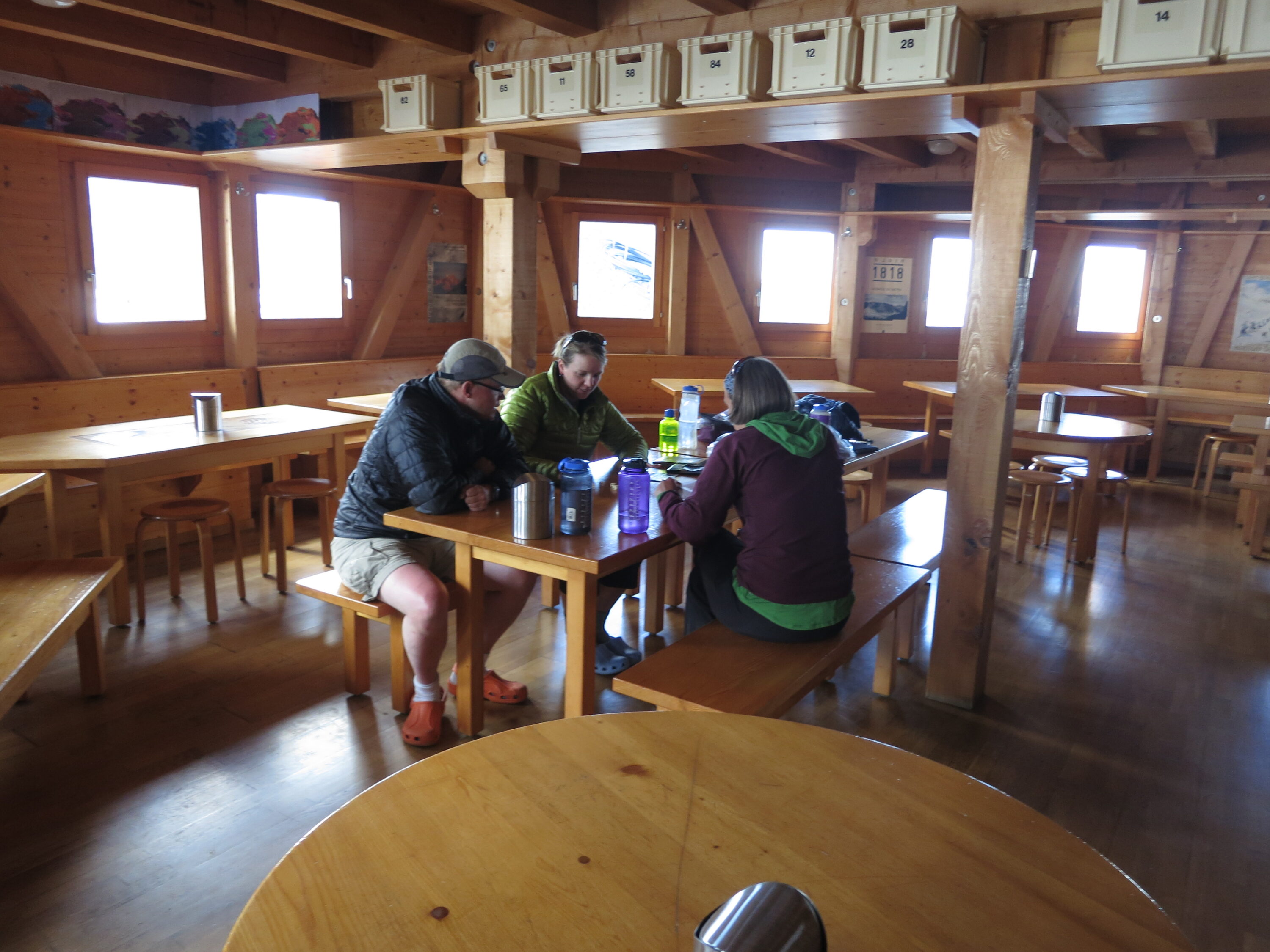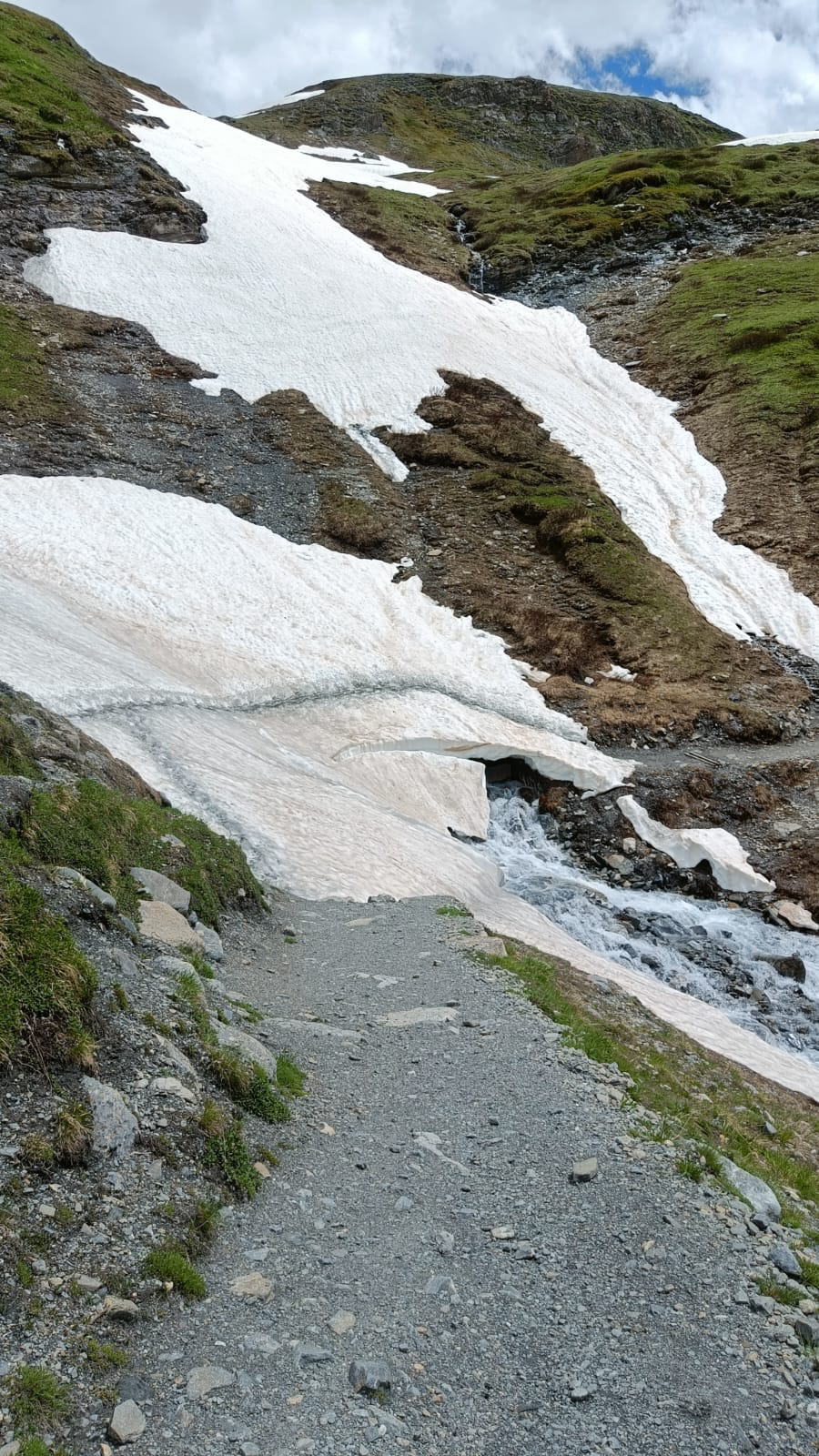Author: Tim Ayriss – Alpenventures Adventure Planning Expert
Early season hiking offers the chance to experience the mountains before the summer crowds, with fresh alpine air and stunning landscapes. However, hiking in this transitional period comes with its own set of challenges, particularly related to snow and weather conditions.
How much snow will there be?


We often get asked this question by our early season customers, and it is super hard to answer. Trail conditions can vary from year to year, and the amount of snow on the trail is influenced by several factors:
- Snow accumulation: The amount of snowfall over the winter and, particularly, in the spring plays a significant role in determining how much will still be lying on hiking paths. This is different year to year.
- Increasing temperatures: A sudden rise in temperatures in spring and heavy rainfall at higher altitudes can cause snow to melt quickly.
- Decreasing temperatures: Conversely, lingering cooler temperatures can allow snow to remain, and if precipitation occurs, it may fall as snow, especially in higher passes.
- Altitude: The higher the altitude, the more likely snow remains on trails, as temperatures are cooler the higher you go.
- Aspect: Hiking paths which traverse North facing aspects, or shaded gullies can be snow covered even as late as July. You can expect sunny South facing aspects to loose their snow quickly.
- Weather Conditions: Fresh snow is not uncommon – even into June


Monitoring Trail Conditions
To assess trail conditions, it’s best to rely on more than just standard weather apps. A Mountain Weather Forecast can provide temperature and precipitation data at different altitudes, helping you understand what is happening with the snow, especially at higher elevations.
Another useful tool is webcams –Many European ski areas have webcams that can provide a live view of the snow line and conditions along your route. You can find these webcams in your eGuidebook or by using Google Maps and web searches. Hiking maps also often identify webcam locations along your route.
Social media can also be a helpful resource for finding out current trail conditions. For example, Facebook groups dedicated to popular hikes like the Tour du Mont Blanc or Alta Via 1 often feature posts with trail updates, photos, and snow reports.
Getting Information from Accommodations
Accommodation providers along your route, particularly mountain huts, often have the most up-to-date knowledge of trail conditions.


While hotels may not have detailed information, they might direct you to someone who does. Tourist offices and Mountain Guide offices in nearby towns are also great sources of reliable trail information. It’s a good idea to check in with these offices before starting your tour or when you stop at towns along the way.
Snow-covered Trails
Snow can create both challenges and risks. While it may make progress slower due to slipping or breaking through, the real danger comes when trails become steeper. On steep snow-covered terrain, there is a high risk of slipping or stumbling, leading to a fall. If you do fall, you may slide quickly and gain momentum, which can result in injury or worse. It’s critical to evaluate your experience, equipment, and ability to handle such terrain.
Experienced mountaineers use an ice axe to self-arrest in steep, snow-covered areas. However, an ice axe is only useful if you know how to use it. The snow is often frozen and icier in the early mornings, making it more challenging and dangerous to cross. As the day warms, the snow may soften, but conditions can still be risky. When confronted with steeper snow-covered trails, it is important to recognize that ascending is generally easier than descending.
You may wish to carry a pair of walking crampons that you can slip over your shoes when you cross snow-covered sections of the trail to give you better grip and ensure you are carrying hiking poles to give you balance.
Snow Bridges and Avalanches


Snow-covered trails can hide streams, holes, and other hazards with what is known as a ‘snow bridge). Snow bridges can be hazardous, as the snow’s thickness is hard to gauge, and warmer temperatures may cause the snow to soften, weakening the bridge’s stability. Crossing snow bridges on steep terrain adds the risk of falling into a gully or waterfall, which can be fatal. In many areas, footbridges across streams are only put in place once snow has fully melted.
Avalanches can also be a serious concern for early season trekkers. While many people associate avalanches with steep, snow-covered slopes, they can occur in seemingly safe, lush green valleys. Avalanches can come from above, and snow on the trail doesn’t always reflect the risk level that surrounds you. Wet snow avalanches, which occur when snow melts and the water weakens the bond between the snow and ground, can be released from above you and travel quickly into the valley. These avalanches can be heavy and dangerous – always be mindful of the angle of the slope you are traversing and avoid walking under steep, snow-laden slopes.
Our Early Season Tours
If you like the sound of an early season hike, and feel prepared for the challenges it may bring, we have two great options. The first is our 5 day East Bernese Oberland Traverse Trek. This is a classic Swiss experience, with awe-inspiring mountain scenery and a long history of mountain and adventure travel. The second is our 6 day Hut to Hut light in Switzerland. This tour is authentically Swiss, deep in the heart of the Appenzell region of Switzerland – expect great food, traditional culture and a friendly welcome at the mountain huts.
Whether you are heading out on one of our tours, or are stepping out on an early season mountain adventure – ensure you have gathered as much information as possible about the conditions and are appropriately equipped to tackle any challenges that may come your way! Happy hiking, and stay safe!
